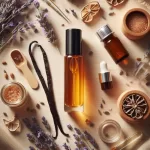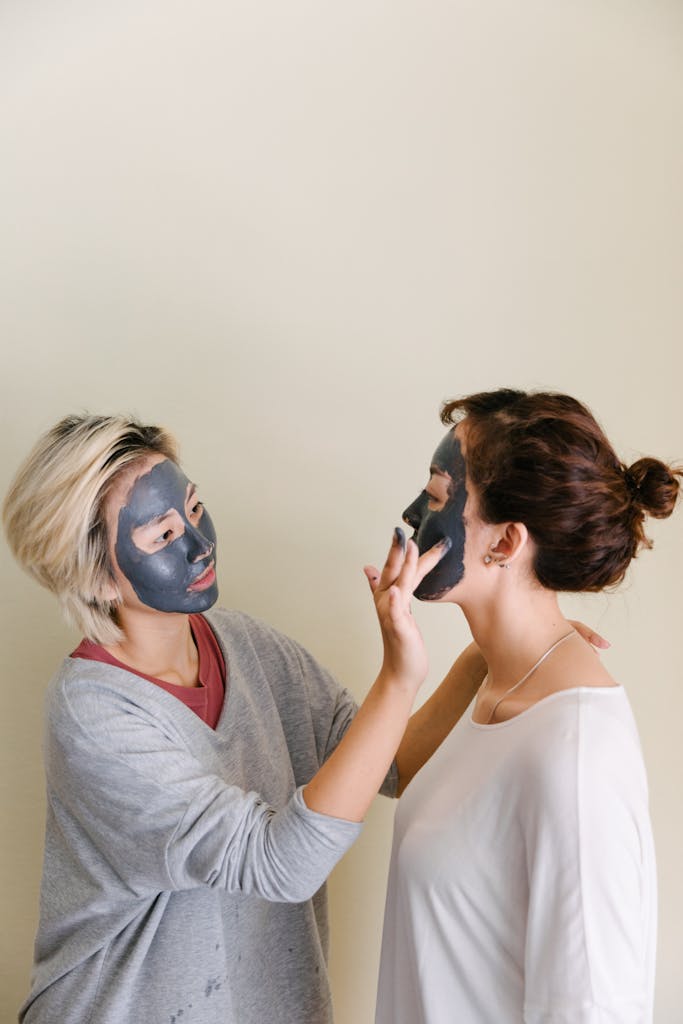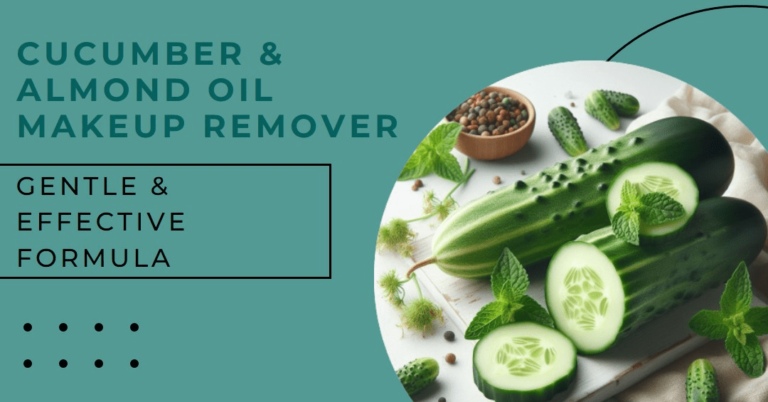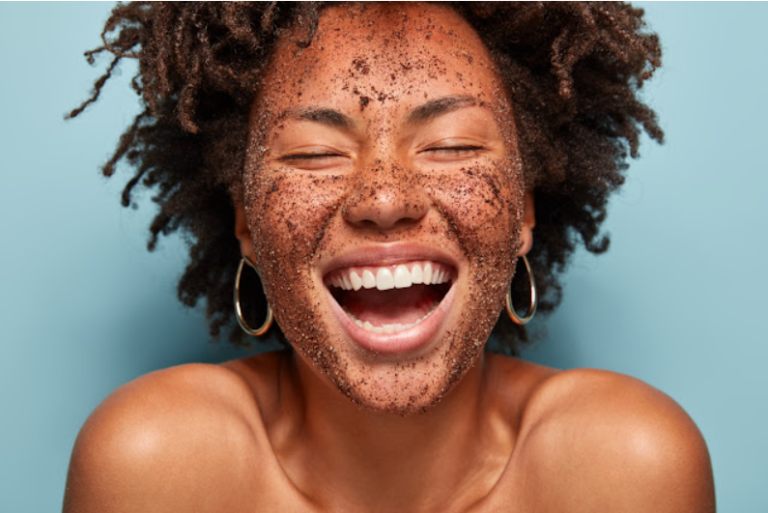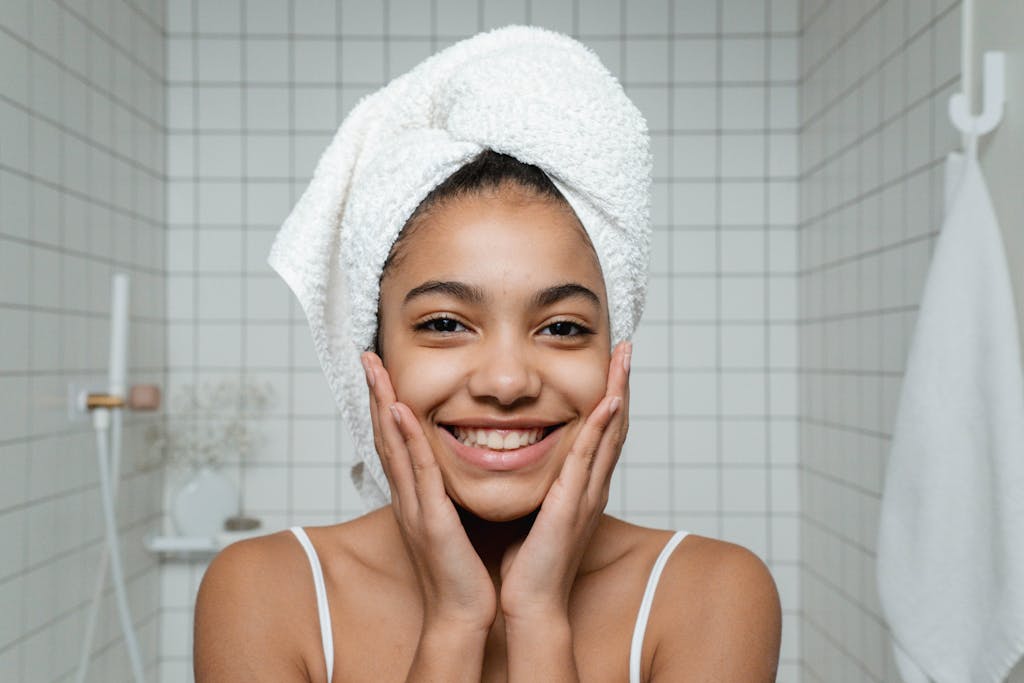DIY Natural Perfume: Create Your Signature Scent Today with a Free Recipe Card (2024 update)
Ever wanted a signature scent that’s truly unique to you? Creating your own DIY natural perfume is not only fun but also empowering for natural skincare enthusiasts. It’s a way to craft a personalized fragrance without synthetic chemicals, offering a healthier alternative to commercial perfumes.
In this beginner’s guide, you’ll discover the basics of blending essential oils to create your custom scent. Whether you’re looking to soothe with lavender or invigorate with citrus, the possibilities are endless. Plus, it’s more affordable than you might think!
Ready to get started? Let’s dive into the world of natural perfumery and unleash your creativity! For an extra boost, check out this Homemade Natural Perfume Recipe – free of nasty chemicals to see how easy it can be.
Understanding Natural Perfumes
Have you ever wondered what it’s like to create your own perfume right at home? Making DIY natural perfume is a fun and rewarding activity that allows you to personalize your scent and avoid harmful chemicals. Let’s dive into the world of natural perfumes to understand what they are and why you should give it a try.
What Are Natural Perfumes?
Natural perfumes are fragrances made from ingredients found in nature. Unlike synthetic perfumes that use artificial chemicals, natural perfumes rely on essential oils and other natural substances. Some common ingredients you’ll find in natural perfumes include:
- Essential Oils: These are concentrated extracts from plants. Popular ones are lavender, rose, and sandalwood.
- Carrier Oils: These dilute essential oils to make them safe for skin contact. Examples include jojoba oil and almond oil.
- Alcohol or Vodka: Helps in blending the oils and makes the perfume last longer on your skin.
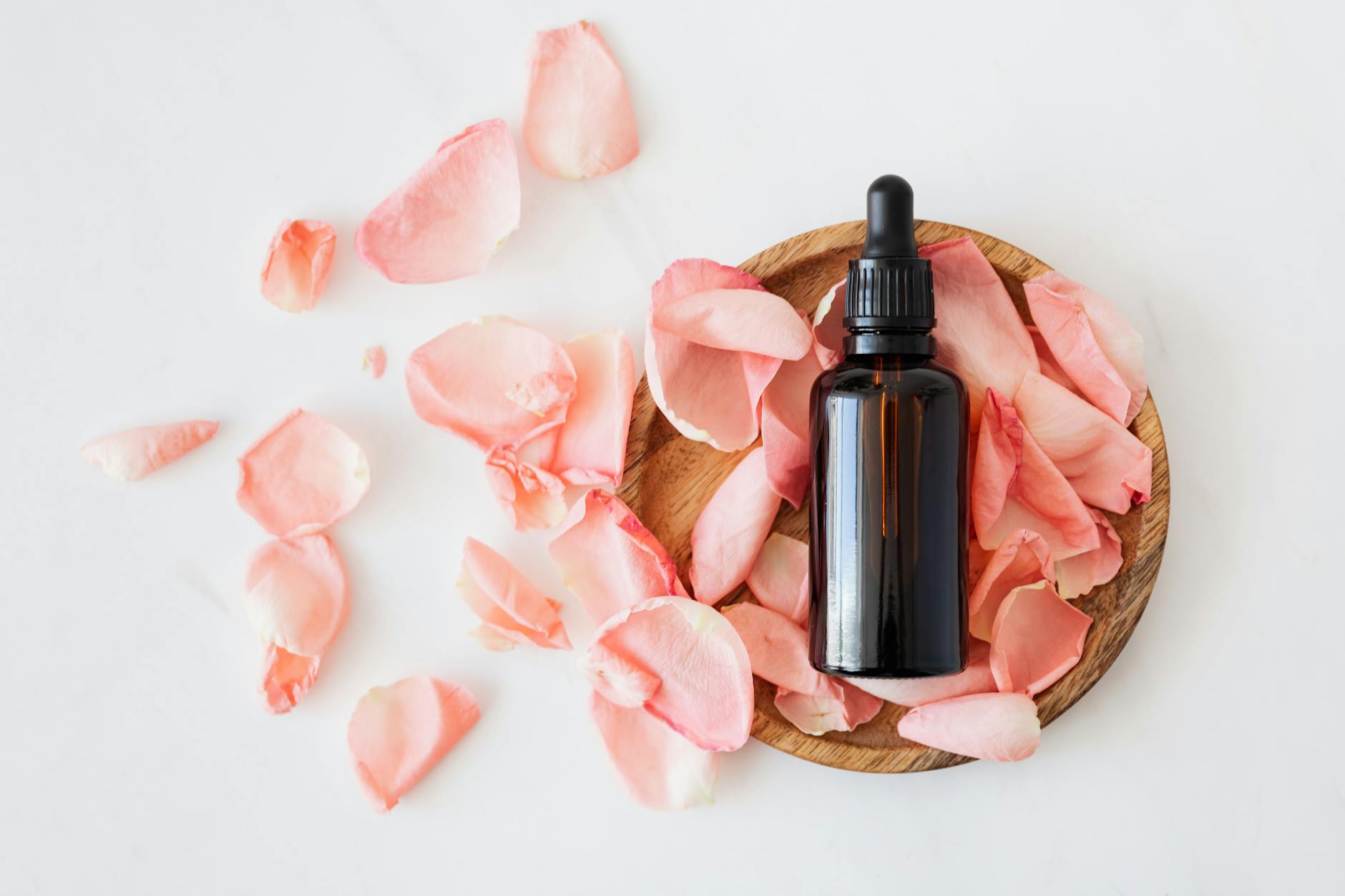 Photo by Karolina Kaboompics
Photo by Karolina Kaboompics
Creating natural perfumes is an eco-friendly process, allowing you to use sustainable ingredients without relying on synthetic scents. If you’re curious about deeper benefits, you can read more about natural perfume benefits from Florascent.
Benefits of DIY Natural Perfume
Why should you consider making your own natural perfume? Here are some of the compelling reasons:
- Customization: You have complete control over the scent. Whether you like floral, citrus, or spicy aromas, it’s all up to you!
- Avoidance of Chemicals: Commercial perfumes often contain synthetic substances that can cause allergies or skin irritations. By making your own, you can avoid these nasties.
- Sustainability: Using natural ingredients means you are making an environmentally friendly choice. It’s a small step towards a greener planet.
- Cost-Effective: Creating your own perfume can be a lot cheaper than buying high-end perfumes from the store.
If you’re excited about the idea and want to start mixing, here’s a simple DIY perfume recipe from Wellness Mama that you can follow.
By exploring natural perfumes, you not only enjoy a personalized fragrance but also make a healthier and more sustainable choice. So why not give it a try? 🌿
Cultural Significance of Natural Fragrances
Natural fragrances have played significant roles in various cultures throughout history.
- In ancient Egypt, perfumes were an integral part of religious ceremonies and daily life, with fragrances like myrrh and frankincense holding sacred status.
- In India, the tradition of attar (natural perfume oils) has been practiced for centuries, with different scents associated with specific deities and celebrations.
- Japanese culture emphasizes subtle, nature-inspired scents, often incorporating notes of cherry blossom or hinoki wood. Middle Eastern perfumery traditions heavily feature rich, exotic scents like oud and rose.
Stay tuned for more tips and recipes to help you create your unique scent.
Essential Ingredients for Creating DIY Natural Perfume
Creating your own natural perfume is a fun and affordable way to design your signature scent. You’ll need a few key ingredients to get started, and understanding these will ensure you craft a perfect fragrance. Let’s dive into the essentials required for making your own perfume at home.
Essential Oils
Essential oils are the heart of any natural perfume. They are highly concentrated plant extracts that capture the essence of the plant’s fragrance. Here are some popular essential oils and their properties:
- Lavender: Known for its calming and relaxing properties, lavender essential oil is a classic choice in perfumery. It blends well with many other oils.
- Rose: With its rich and floral scent, rose oil is often considered luxurious and romantic. It’s great for creating sophisticated fragrances.
- Peppermint: Fresh and invigorating, peppermint oil adds a bright and refreshing note to your perfume.
- Lemon: Citrus oils like lemon bring a zesty and uplifting aroma, perfect for a fresh and clean scent.
- Sandalwood: Earthy and woody, sandalwood oil provides a strong and lasting base note.
Using high-quality essential oils can make a big difference in your perfume. Choose oils that you love and feel good about using on your skin.
Carrier Oils
Carrier oils are used to dilute essential oils and help to carry the fragrance. They are an essential component in natural perfume making for several reasons:
- Dilution: They help dilute the essential oils, which can be too strong when applied directly to the skin.
- Skin Absorption: Carrier oils facilitate the absorption of essential oils into the skin.
- Stability: They enhance the stability of the perfume, helping the scent to last longer.
Here are some popular carrier oil options:
- Jojoba Oil: This oil is very similar to the natural oils of your skin, making it an excellent choice for perfume. It doesn’t go rancid easily, ensuring your fragrance lasts longer.
- Sweet Almond Oil: Light and non-greasy, sweet almond oil is perfect for those with sensitive skin.
- Coconut Oil: Fractionated coconut oil stays liquid at room temperature and is easily absorbed into the skin without leaving a greasy feel.
- Grapeseed Oil: Known for its smooth texture and quick absorption, grapeseed oil is a budget-friendly option.
For more details on selecting the best carrier oils, you can check out this guide.
 Photo by Karolina Kaboompics
Photo by Karolina Kaboompics
Creating your own DIY natural perfume combines the art of scent blending with the science of essential and carrier oils. With the right ingredients and a bit of creativity, you can make a unique perfume that reflects your personal style. Ready to start mixing?
The Process of Making Your Own Natural Perfume
Creating your own natural perfume is a fun and rewarding process. Not only do you get to experiment with various scents, but you can also craft a personalized fragrance that’s uniquely you. Ready to dive in? Let’s get started!
My journey into natural perfumes started with a simple blend of lavender and vanilla. I was skeptical at first, thinking it might smell too much like a cookie shop. But when I mixed a few drops of lavender essential oil with a touch of vanilla extract in a base of jojoba oil, something magical happened.
The scent was soft, comforting, and unexpectedly sophisticated. It reminded me of a cozy evenings by the beach bonfire, wrapped in a warm blanket. Friends started asking what perfume I was wearing, and I felt a surge of pride in telling them I’d made it myself. This simple blend became my signature scent, a little reminder of the power of natural ingredients and the joy of creating something uniquely mine.
I have prepared a Free Printable recipe for you to try at the bottom of this post. Enjoy!
Gathering Your Supplies
Before you start, make sure you have all the necessary tools and materials. Here’s what you’ll need:
- Essential Oils: These are the heart of your perfume. Choose oils like lavender, rose, or sandalwood.
- Carrier Oils: These help dilute the essential oils. Jojoba oil and sweet almond oil are great choices.
- Glass Bottles: Dark glass bottles preserve your perfume better.
- Pipettes or Droppers: For precise measurement.
- Alcohol (Optional): Food-grade alcohol can help your perfume last longer.
- Labels and Markers: To keep track of your creations.
Having these supplies on hand makes the process smooth and enjoyable. If you need a more comprehensive guide on what to buy, check this list of DIY natural perfume supplies.
Creating a Scent Profile
Choosing the right scent profile is like creating a masterpiece. You need to balance the base, middle, and top notes. Here’s how:
- Top Notes: These are the first scents you smell. They’re typically light and fresh. Think citrus or lavender.
- Middle Notes: These reveal themselves after the top notes fade. They form the heart of the perfume. Floral or spicy notes work well here.
- Base Notes: These linger the longest. They’re deep and rich, such as sandalwood or vanilla.
To achieve a balanced scent, mix oils from each category. A guideline to follow is 30% top notes, 50% middle notes, and 20% base notes. For more tips, read this article on creating a scent profile.
Mixing Your Ingredients
Now comes the fun part—mixing your oils! Here’s a step-by-step guide:
- Start with Base Notes: Add a few drops of your selected base note oil to the bottle.
- Add Middle Notes: Follow with your chosen middle note oils.
- Finish with Top Notes: Complete the blend with your top notes.
- Shake Gently: Combine the oils by shaking the bottle gently.
- Adjust the Scent: Smell your blend and adjust by adding more of any oil as needed.
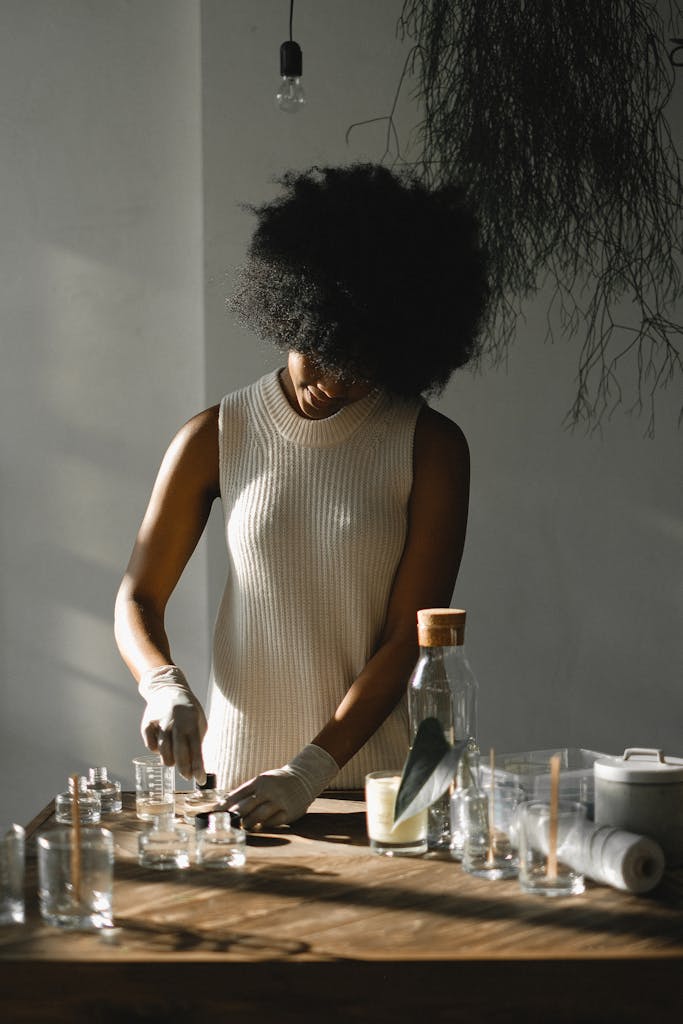
Bottling and Storing Your Perfume
Once your perfume is mixed, the final step is bottling and storing it properly. Here are some best practices:
- Use Dark Glass Bottles: This protects the oils from light, which can degrade them.
- Store in a Cool, Dark Place: Keep your perfume in a drawer or closet to maintain its scent.
- Keep Bottles Tightly Sealed: This prevents the oils from evaporating.
Following these tips ensures your homemade perfume stays fresh and fragrant for a long time. For more on proper storage, check these fragrance storage tips.
Creating your own perfume allows you to express your unique personality through scent. With these steps, you’re well on your way to making a signature fragrance that’s all your own.
Testing Your DIY Natural Perfume
Once you’ve blended your DIY natural perfume, it’s time to put it to the test. This ensures that your scent not only smells amazing but also lasts and projects well. Let’s break down the essential aspects to consider during this process.
Longevity and Sillage
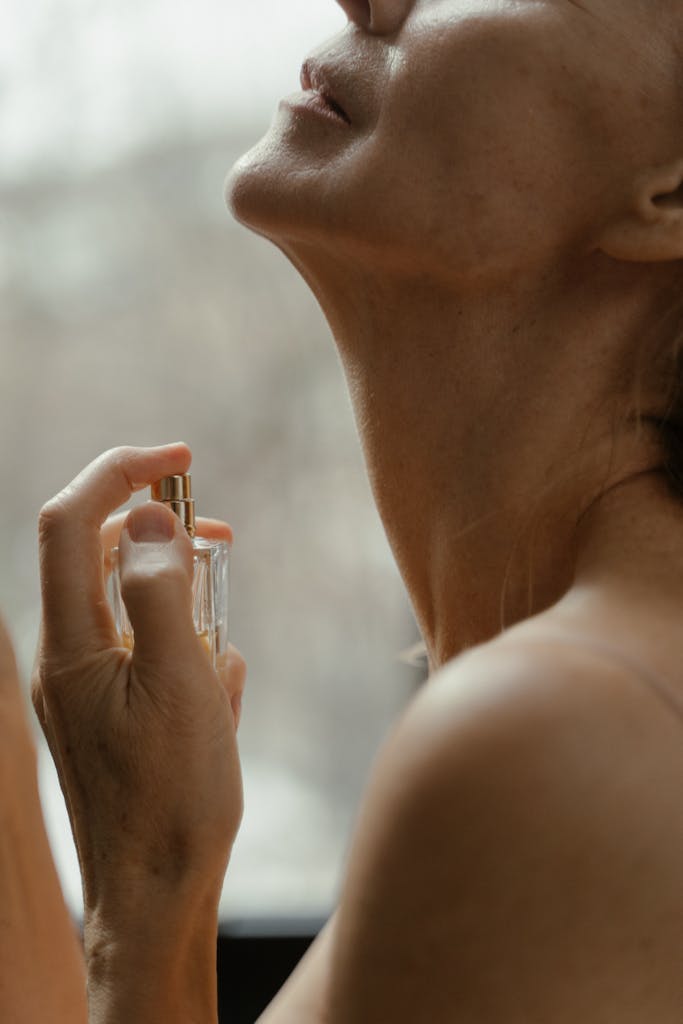
When testing your DIY natural perfume, two important factors to evaluate are longevity and sillage. But what do these terms mean, and how can you achieve the best results?
Longevity refers to how long your perfume lasts on the skin. To extend the life of your scent:
- Moisturize first: Apply your perfume on moisturized skin. Olentium suggests using an unscented oil-based lotion or body oil before applying the perfume.
- Use fixatives: Ingredients like sandalwood, vetiver, and benzoin can help hold the scent longer.
On the other hand, sillage describes the scent trail your perfume leaves behind. A strong sillage means others can smell your fragrance even after you’ve walked away. To enhance sillage:
- Layer your fragrance: Try layering with matching lotion and body wash. Reddit notes that certain ingredients naturally project better, like citrus oils and florals.
- Concentrate on pulse points: Apply your perfume to warm areas like your wrists, neck, and behind your ears to boost sillage.
Experiment with different methods and ingredients to see which combinations work best for your unique DIY natural perfume. Assessing longevity and sillage will ensure your custom scent is as effective as it is delightful.
Sharing Your Creations: Gift-Giving Ideas
Homemade natural perfumes make for unique and thoughtful gifts. Here are some presentation ideas:
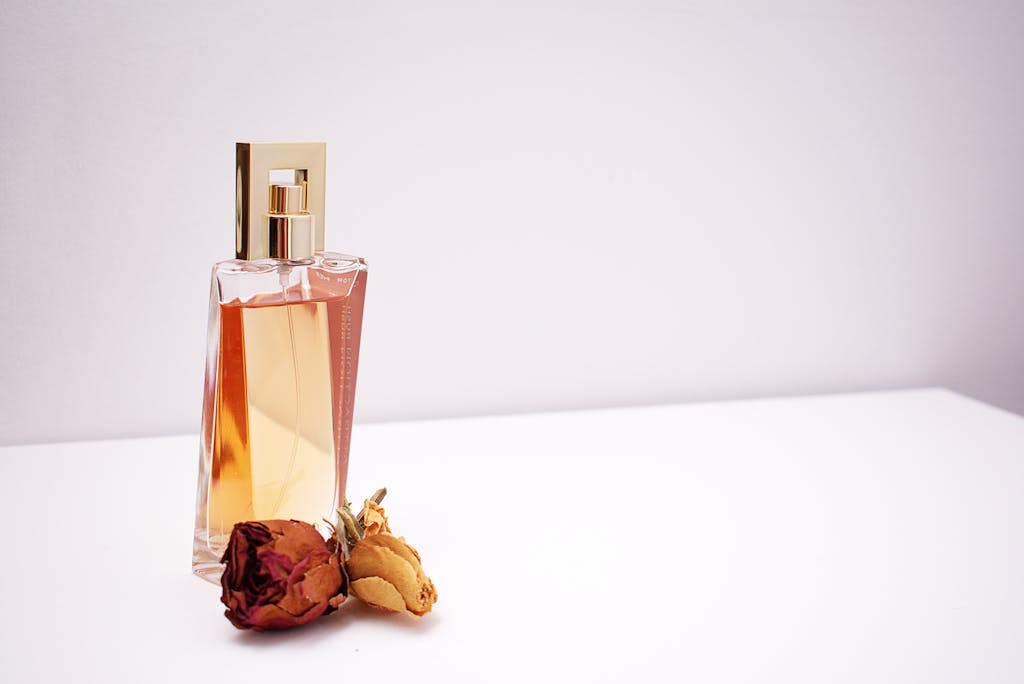
- Create a gift set with small vials of different scents
- Package your perfume in a vintage or artisanal bottle
- Include a handwritten note describing the scent profile and ingredients
- Pair the perfume with complementary items like a scented candle or natural soap
- Design custom labels with the recipient’s name or a special message
- Offer a “create your own blend” kit with various essential oils
Expert Tips and Quotes
Creating your very own natural perfume can be both exciting and challenging. To help you on your journey, we’ve gathered expert tips and inspiring quotes from professionals in the field. Let these nuggets of wisdom guide you as you mix and match your favorite scents.
Blend Your Scents Carefully
When blending your essential oils, balance is key. Start by combining base, middle, and top notes to create a harmonious scent.
- Base Notes: These are the foundation and last the longest on your skin. Think of rich, grounding scents like cedarwood or vanilla.
- Middle Notes: Sometimes called the heart of the perfume, middle notes include lavender and rose. They add depth and character.
- Top Notes: These are the initial scents that fade fast. Fresh and light, like citrus or mint, they create the first impression.
Take it slow, add drops one at a time, and keep sniffing to find the perfect blend. Remember, patience is crucial. Not every mix will work straight away, but with persistence, you’ll craft your signature scent.
Use High-Quality Ingredients
Opt for natural, high-quality essential oils to ensure your perfume is not only delightful but also safe for your skin. Avoid synthetic chemicals and artificial additives that can harm your skin and health.
A wonderful guide on how to use essential oils in perfumes can be found here.
Store Your Perfume Properly
Protect your creation by storing it in dark, airtight bottles. Amber or cobalt blue glass bottles are perfect as they block out light and keep your scent fresh for longer.
Also, make sure to keep the bottles in a cool, dry place. Too much heat or light can make the perfume degrade over time.
Quotes for Inspiration
Getting inspired by experts can elevate your craft. Here are some uplifting quotes:
- “Perfume is the silent language of desire.” – Huib Maat
- “A perfume is more than an extract, it is a presence.” – Giorgio Armani
- “Perfume is like a parenthesis, a moment of freedom.” – Sonia Rykiel
You can find more inspiring fragrance quotes here and here.
Trust Your Nose
Your sense of smell is unique, and the best natural perfumes come from trusting your instincts. Mix scents that you love and feel a connection to. Perfume is deeply personal, and what pleases your nose can bring joy to others too.
Creating a DIY natural perfume means being a chemist and artist at the same time. Trust your intuitions, be creative, and enjoy the process. Happy blending!
 Photo by Karolina Kaboompics
Photo by Karolina Kaboompics
User Testimonials
Creating your own natural perfume is more than just a hobby; it’s a journey. Let’s explore why so many people are hooked on making their own scents through some real user testimonials!
Successful Stories
Many people have found success and joy in crafting their own DIY natural perfume. From hobbyists to those taking the plunge into the perfume industry, the stories are inspiring.
- Wellness Mama: In her DIY Herbal Perfume Recipe, Wellness Mama shares how easy it was to mix essential oils with food-grade alcohol. The natural aroma benefits were an added bonus!
- Reddit User: A user on Reddit discussed how studying perfumery turned from a hobby into a full-time passion. They left their job to create customized fragrance blends.
Common Challenges
Not everyone finds it easy at first. Some users shared the bumps they hit along the way and how they overcame them.
- Soapmaking Forum: Members on the Soapmaking Forum discuss the challenges of finding reliable recipes online. Many users recommend starting with simple formulations to avoid getting overwhelmed.
- Amazon Reviews: Reviews for the book All-Natural Perfume Making show that beginners sometimes struggle with mixing the right proportions. Yet, persistence and practice help them improve.
Favorite Ingredients
Users rave about different ingredients that make their perfumes stand out. The following have been popular among natural perfume creators:
- Lavender: Loved for its calming effect and versatility.
- Rose: A classic scent that can be either delicate or powerful.
- Vanilla: Adds a warm, sweet note that’s hard to resist.
Unique Creations
Some users experiment with unique scent combinations, setting their creations apart.
- Fresh Beauty Fix: One review on the Fresh Beauty Fix site talks about a unique blend of grapefruit, jasmine tea, and basil, creating a fresh yet exotic scent.
- Justina’s Gems: Justina’s Gems highlights the joy of finding those perfect vanilla notes in a sea of fresh, earthy scents.
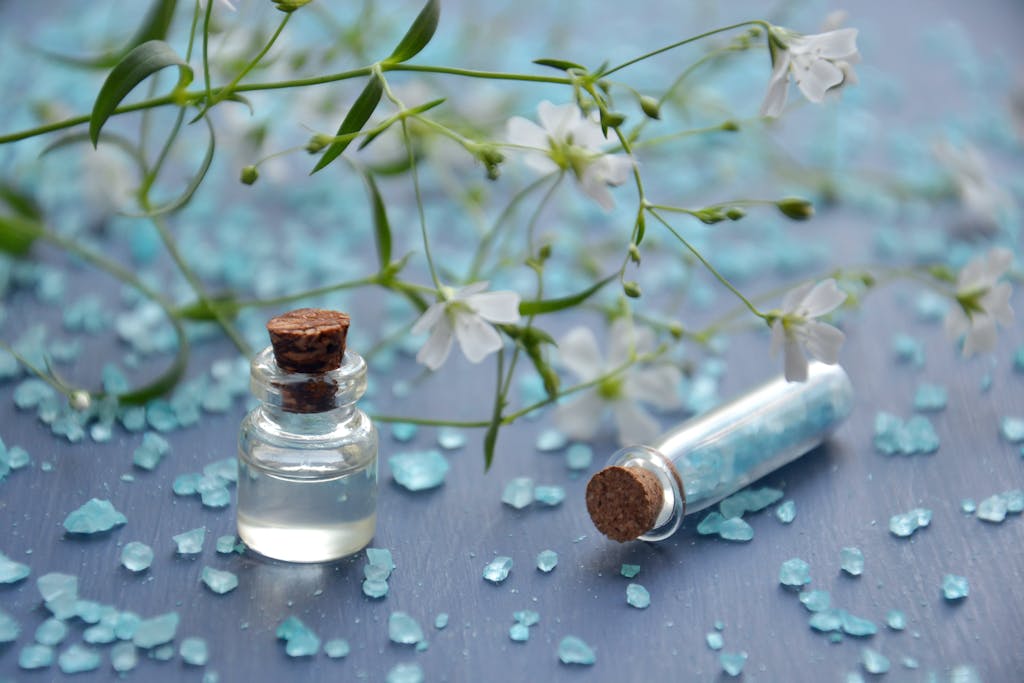
Each testimonial offers a glimpse into the joys and sometimes frustrations of making your own natural perfume. Curious to try it yourself? Dive in and let your creativity blossom! 🌿
Common Mistakes to Avoid
Starting your journey in making DIY natural perfume can be a fun and rewarding experience. However, there are some common mistakes that can hinder your progress. By avoiding these pitfalls, you can ensure your homemade perfumes turn out beautifully.
 Photo by Karolina Kaboompics
Photo by Karolina Kaboompics
Using Too Many Essential Oils
Believe it or not, sometimes less is more. While it’s tempting to mix many essential oils to create a complex scent, this can often lead to an overwhelming or unpleasant perfume.
- Stick to 2-3 essential oils: Try to combine a maximum of two or three oils in your first attempts. This ensures that you can identify and appreciate each scent.
- Note compatibility: Certain essential oils don’t blend well together. Using only a few will help you avoid undesirable combinations.
Ignoring Proper Dilution
Essential oils are powerful, and using them without proper dilution can cause skin irritation.
- Use carrier oils: Always mix your essential oils with a carrier oil like jojoba or almond oil. This not only makes the perfume skin-safe but also helps to distribute the scent evenly.
- Correct ratios: Keep essential oil concentrations between 1-3% for most perfumes. Overuse can be harmful and overpowering.
Skipping the Aging Process
Just like fine wine or cheese, perfumes often need time to mature and develop their true scent.
- Be patient: Let your blend sit for at least a week before using it. This aging period allows the scents to meld together perfectly.
- Store properly: Keep your perfume in a cool, dark place during the aging process to preserve the integrity of the oils.
Overlooking Safety and Sensitivities
Safety should always be your top priority when creating custom scents.
- Patch test: Always perform a patch test when trying a new perfume to rule out allergic reactions.
- Know your oils: Some essential oils, like citrus, can cause photosensitivity. Research your chosen oils for any potential side effects.
Not Keeping Records
Imagine creating the perfect perfume and then forgetting how you did it! Keeping detailed records of your recipes is crucial.
- Write it down: Document every ingredient and its proportion. This way, you can replicate or tweak it in the future.
- Use a journal: A dedicated perfume journal can be a great way to keep track of your creations and adjustments.
Avoiding these common mistakes can save you time and frustration as you explore the art of making your own natural perfumes. For further reading on how to make an effective and safe DIY natural perfume, check out this guide.
FAQ About Creating Your Own Natural Perfume
Creating your own natural perfume can be a fun and rewarding experience. Since this topic is new for many, it’s common to have a lot of questions. We’ve gathered some of the most frequently asked questions to help you get started on your DIY natural perfume journey.
What Ingredients Do I Need to Make Natural Perfume?
To make your own natural perfume, you’ll need a few basic ingredients:
- Essential oils: These are the heart of your perfume. Popular choices include lavender, rose, and vanilla.
- Carrier oils: These are used to dilute essential oils. Common carrier oils include jojoba and sweet almond oil.
- Alcohol: Preferably 100-proof vodka, which helps in the blending process and acts as a preservative.
- Distilled water: Used to dilute the mixture slightly.
- Glass bottles: For storing your final product.
Check out Savvy Homemade’s guide for a more detailed list and some beginner-friendly recipes!
How Long Does Homemade Perfume Last?
The shelf life of homemade perfume depends on the ingredients used, but generally, it can last from 6 months to a year. Alcohol-based perfumes usually have a longer shelf life compared to those made solely with carrier oils. To extend the lifespan of your perfume, store it in a cool, dark place and use clean tools and containers during the making process.
Are Natural Perfumes Safe for Sensitive Skin?
Yes, natural perfumes are generally safer for sensitive skin because they do not contain synthetic chemicals. However, it’s essential to conduct a patch test before applying the perfume. Apply a small amount on your wrist and wait 24 hours to see if any reaction occurs. If you’re prone to allergies, it’s a good idea to do some research on safe essential oils for sensitive skin.
How Can I Make the Scent Last Longer?
The longevity of a scent depends on the essential oils used and their concentration. Here are some tips to make your natural perfume last longer:
- Layering: Apply a body oil or lotion before spritzing your perfume.
- Pulse points: Apply the perfume to pulse points like the wrists, neck, and behind the ears.
- Proper storage: Keep your perfume in a dark, cool place to preserve its potency.
For more detailed tips and tricks on making your scent last, visit Tsila Organics.
Can Kids Use Natural Perfume?
Kids can use natural perfume, but it’s crucial to use child-safe essential oils and lower concentrations. Avoid oils that may cause skin irritation, such as eucalyptus and peppermint. Always supervise children when making or applying perfume and conduct a patch test first.
Can I Customize My Own Scent?
Absolutely! One of the best parts of making your own perfume is the ability to customize the scent to your liking. Start with a blend of top, middle, and base notes:
- Top notes: These are the first scents you smell. Examples include citrus and mint.
- Middle notes: Also known as heart notes, they emerge after the top notes fade. Examples include rose and lavender.
- Base notes: These are the lasting scents. Common base notes include sandalwood and vanilla.
Experiment with different combinations until you find your perfect blend. For inspiration, check out Bottega Zero Waste.
Now that you know the basics, you’re ready to start your DIY natural perfume journey. Remember to have fun with the process and don’t be afraid to get creative with your blends!
 Photo by Anna Shvets
Photo by Anna Shvets
Stay tuned for more tips and recipes in the next section. 🌿
Call to Action
Are you ready to embark on the exciting journey of creating your own natural perfume? It’s not just about crafting a unique scent; it’s also about embracing a healthier lifestyle free from artificial chemicals. Let’s explore the steps to create a DIY natural perfume that speaks to your senses!
Choose Your Essential Oils
First, gather your essential oils. The best part about making your own perfume is that you get to customize your fragrance. Essential oils not only smell divine but also offer therapeutic benefits. Think about which scents resonate with you. Here are some popular options:
- Lavender: Calming and soothing
- Citrus oils (Orange, Lemon): Energizing and refreshing
- Rose: Romantic and uplifting
- Ylang Ylang: Exotic and floral
You can mix and match these scents to create a blend that’s uniquely yours. Feel free to experiment!
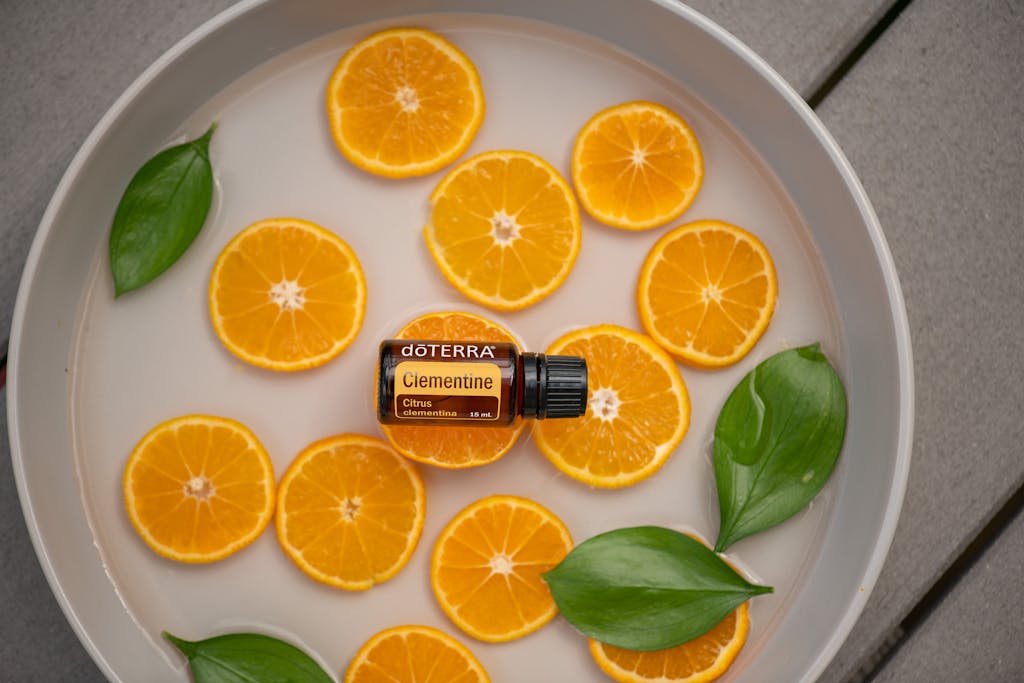
Gather Your Ingredients and Tools
To make your DIY natural perfume, you don’t need an extensive list of materials. Most items are easily accessible:
- Carrier oils (such as jojoba or sweet almond oil)
- Essential oils (your chosen scents)
- Glass spray bottles or roller bottles
- Alcohol (like vodka) if you want a more traditional perfume base
- Dropper for precise measurements
As you gather these, remember that the quality of ingredients will highly influence the outcome of your homemade perfume.
Blend and Test Your Scent
Creating your own natural perfume is like being a chef in your own fragrance kitchen. Start by mixing a few drops of your favorite essential oils with your carrier oil (or alcohol). The general rule is:
- Start with a base note (like cedarwood or vanilla)
- Add a middle note (like lavender or rose)
- Finish with a top note (like lemon or peppermint)
Shake the mixture well and let it sit for a couple of days. This resting period allows the scents to meld together harmoniously. Then, do a small skin test to make sure you adore the scent.
Share Your Creation and Inspire Others
Now that you’ve crafted your masterpiece, why keep it to yourself? Share your unique DIY natural perfume recipe with friends and fellow natural skincare enthusiasts. Inspire others to take the leap into the world of natural fragrances. If you’re feeling extra generous, create some sample bottles to give as gifts!
Bonus Tip: Print a free recipe card and jot down your signature scent formula. This way, you have a keepsake of your creation and an easy guide to replicate or tweak it in the future.
By following these steps, you’re not just creating a fragrance; you’re cultivating a healthier and more mindful lifestyle. Ready to get started? Gather your ingredients, and let’s make magic!
For more inspiration and detailed recipes, check out Biome’s guide on making DIY natural perfume oil and Simple Life Mom’s homemade organic perfume tips. Happy crafting!
Embrace the Art of DIY Natural Perfume
Creating your own natural perfume is not just a fun and creative activity; it’s a wonderful way to embrace a lifestyle that’s more connected to nature. By crafting your own scents, you get to personalize your fragrance, ensuring it resonates with your personality and preferences. Let’s explore the journey you’ve embarked on and see how to make the most of this aromatic adventure.
The Joy of Personalization
Why stick to store-bought perfumes when you can make your own unique blend? When you create your own scent, you have the freedom to mix and match your favorite essential oils. Think about it — you can craft a scent that’s exclusively yours, unlike anything available in the market. Essential oils not only smell heavenly but also offer various therapeutic benefits. For example, lavender can help you relax, while citrus oils can uplift your spirits.
Cost-Effective and Eco-Friendly
Making perfume at home is a savvy way to save money. Quality perfumes come with a high price tag, but with a few inexpensive ingredients, you can make your own luxury scent at a fraction of the cost. Plus, it’s an eco-friendly option. Commercial perfumes often contain synthetic chemicals and come in non-recyclable packaging, contributing to environmental waste. DIY natural perfumes, especially when stored in reusable bottles, are a greener choice.
Easy Steps to Get Started
Here’s a quick recap of the steps to create your own natural perfume:
- Choose Your Base: Carrier oils like jojoba, sweet almond, or alcohol.
- Select Essential Oils: Choose oils that appeal to you. Popular options include lavender, rose, and sandalwood.
- Mix and Match: Blend the oils to create a balanced scent.
- Age Your Mixture: Let it sit for a few weeks to allow the scents to meld.
- Store Properly: Use dark glass bottles to preserve the fragrance.
For a more detailed guide, check out How to Make Perfume at Home – A Guide For Beginners.
Tips for Creating Long-Lasting Scents
Achieving a long-lasting scent isn’t tricky if you know what to do. Here are some tips:
- Use Fixatives: Ingredients like sandalwood or benzoin help make the scent last longer.
- Balance Your Oils: Make sure you balance top, middle, and base notes for a well-rounded scent.
- Proper Storage: Store your perfumes in a cool, dark place to prevent degradation.
Exploring Popular Recipes
Here are a few popular DIY natural perfume recipes to get you started:
- Floral Fancy: Mix rose, lavender, and ylang-ylang for a romantic and calming scent.
- Citrus Splash: Combine lemon, bergamot, and sandalwood for an invigorating and fresh fragrance.
- Woodsy Wonder: Blend cedarwood, vetiver, and patchouli for a grounding and earthy aroma.
For more inspiration, visit DIY Herbal Perfume Recipe.
DIY Lavender and Vanilla Natural Perfume
Equipment
- – Small glass bottle for mixing and infusing
- – Small roll-on bottle for application
- – Funnel (optional, for transferring to roll-on bottle)
Materials
- 60 ml Jojoba oil
- 15 drops Lavender essential oil
- 5 drops Vanilla extract alcohol-free
- 1 Vanilla bean pod split lengthwise (optional)
- 5 drops Vitamin E oil optional, as a preservative
Instructions
- In a small, sterilized glass bottle, combine the jojoba oil, lavender essential oil, and vanilla extract.
- If using, add the vitamin E oil.
- If desired, place the split vanilla bean pod into the bottle for extra vanilla fragrance.
- Secure the lid tightly and gently shake the bottle to mix the oils.
- Store the bottle in a cool, dark place for about 2 weeks, shaking gently every day to help the scents infuse.
- After 2 weeks, remove the vanilla bean pod if used.
- Transfer the perfume to a small roll-on bottle for easy application.
Notes
Joining the DIY Community
Don’t forget to share your creations! There are thriving online communities and forums where you can exchange tips, recipes, and experiences. Engaging with fellow DIY enthusiasts can provide support and inspiration along your aromatic journey.
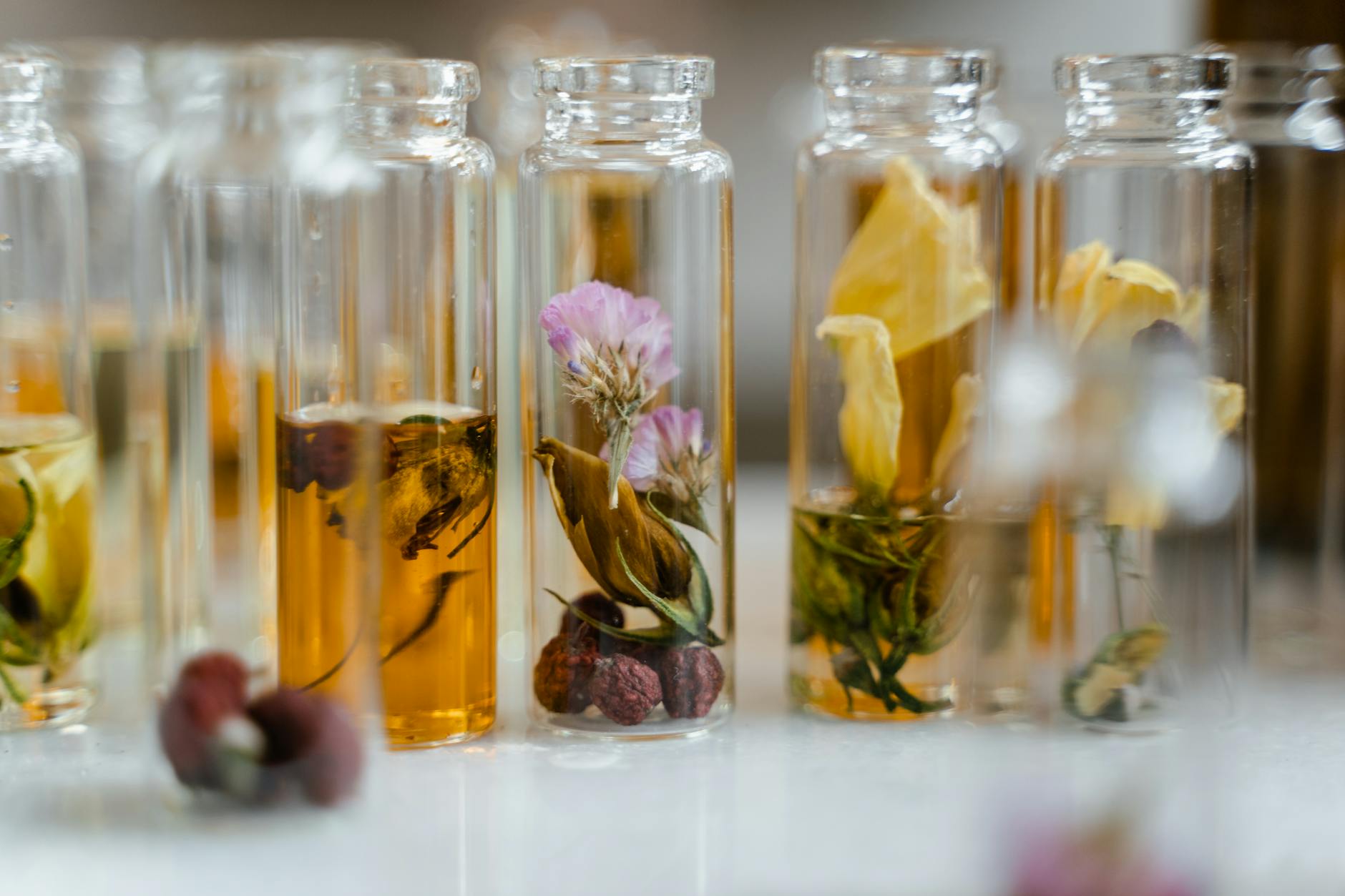 Photo by MART PRODUCTION
Photo by MART PRODUCTION
Final Thoughts
Creating your own natural perfume is a beautiful blend of science and art. It’s an expression of who you are and a reflection of your creativity. So go ahead, play with different essential oils, and find the perfect blend that speaks to you. Happy scent-making!


